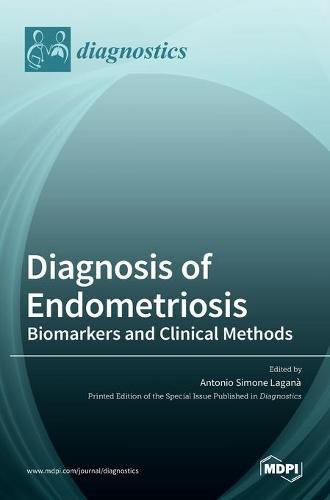Readings Newsletter
Become a Readings Member to make your shopping experience even easier.
Sign in or sign up for free!
You’re not far away from qualifying for FREE standard shipping within Australia
You’ve qualified for FREE standard shipping within Australia
The cart is loading…






This title is printed to order. This book may have been self-published. If so, we cannot guarantee the quality of the content. In the main most books will have gone through the editing process however some may not. We therefore suggest that you be aware of this before ordering this book. If in doubt check either the author or publisher’s details as we are unable to accept any returns unless they are faulty. Please contact us if you have any questions.
Endometriosis is defined as the presence of endometrial-like endometrial cells, glands, and stroma outside the uterus, causing a wide range of symptoms and signs, including acute and chronic pelvic pain and infertility. Endometriosis affects approximately 10% of women of reproductive age, and up to 50% of infertile women. The etiopathogenesis of endometriosis still remains controversial: immune, hormonal, genetic, and epigenetic factors may be all involved, and several theories have been proposed to explain it.
One of the main problems for the management of endometriosis is the significant diagnostic delay: to date, several biomarkers are currently being tested in order to provide a reliable non-invasive diagnosis in case of symptoms and signs suspicious for endometriosis.
In addition, ultrasound techniques and magnetic resonance imaging are evolving rapidly, allowing for better accuracy, even with the use of artificial intelligence. Finally, new potential histological makers are helping to correlate the occurrence of endometriosis in different anatomical landmarks, supporting specific pathways to clarify the etiology of the disease.
$9.00 standard shipping within Australia
FREE standard shipping within Australia for orders over $100.00
Express & International shipping calculated at checkout
This title is printed to order. This book may have been self-published. If so, we cannot guarantee the quality of the content. In the main most books will have gone through the editing process however some may not. We therefore suggest that you be aware of this before ordering this book. If in doubt check either the author or publisher’s details as we are unable to accept any returns unless they are faulty. Please contact us if you have any questions.
Endometriosis is defined as the presence of endometrial-like endometrial cells, glands, and stroma outside the uterus, causing a wide range of symptoms and signs, including acute and chronic pelvic pain and infertility. Endometriosis affects approximately 10% of women of reproductive age, and up to 50% of infertile women. The etiopathogenesis of endometriosis still remains controversial: immune, hormonal, genetic, and epigenetic factors may be all involved, and several theories have been proposed to explain it.
One of the main problems for the management of endometriosis is the significant diagnostic delay: to date, several biomarkers are currently being tested in order to provide a reliable non-invasive diagnosis in case of symptoms and signs suspicious for endometriosis.
In addition, ultrasound techniques and magnetic resonance imaging are evolving rapidly, allowing for better accuracy, even with the use of artificial intelligence. Finally, new potential histological makers are helping to correlate the occurrence of endometriosis in different anatomical landmarks, supporting specific pathways to clarify the etiology of the disease.